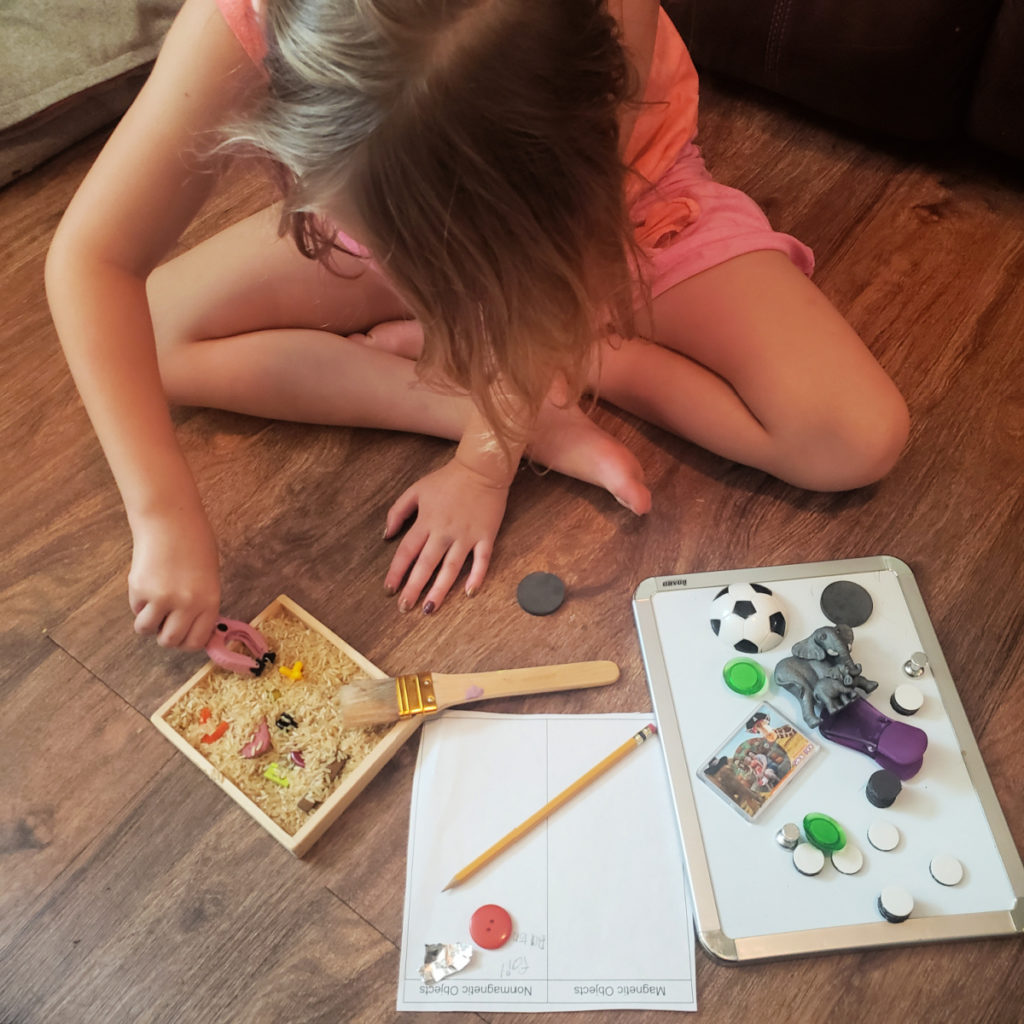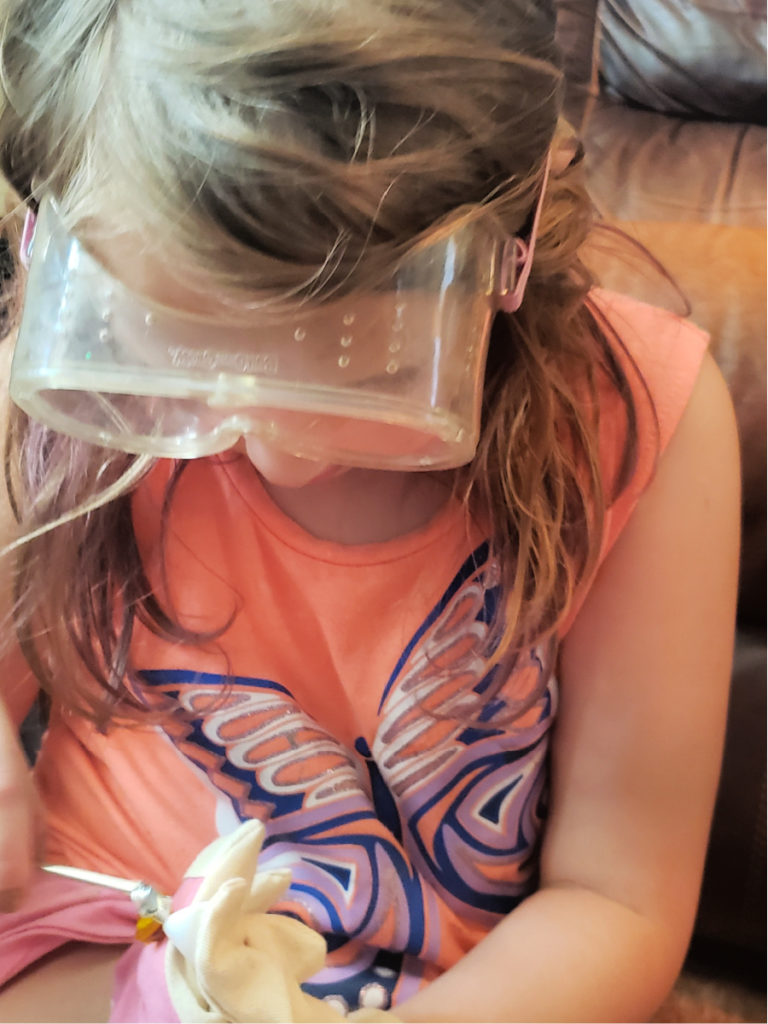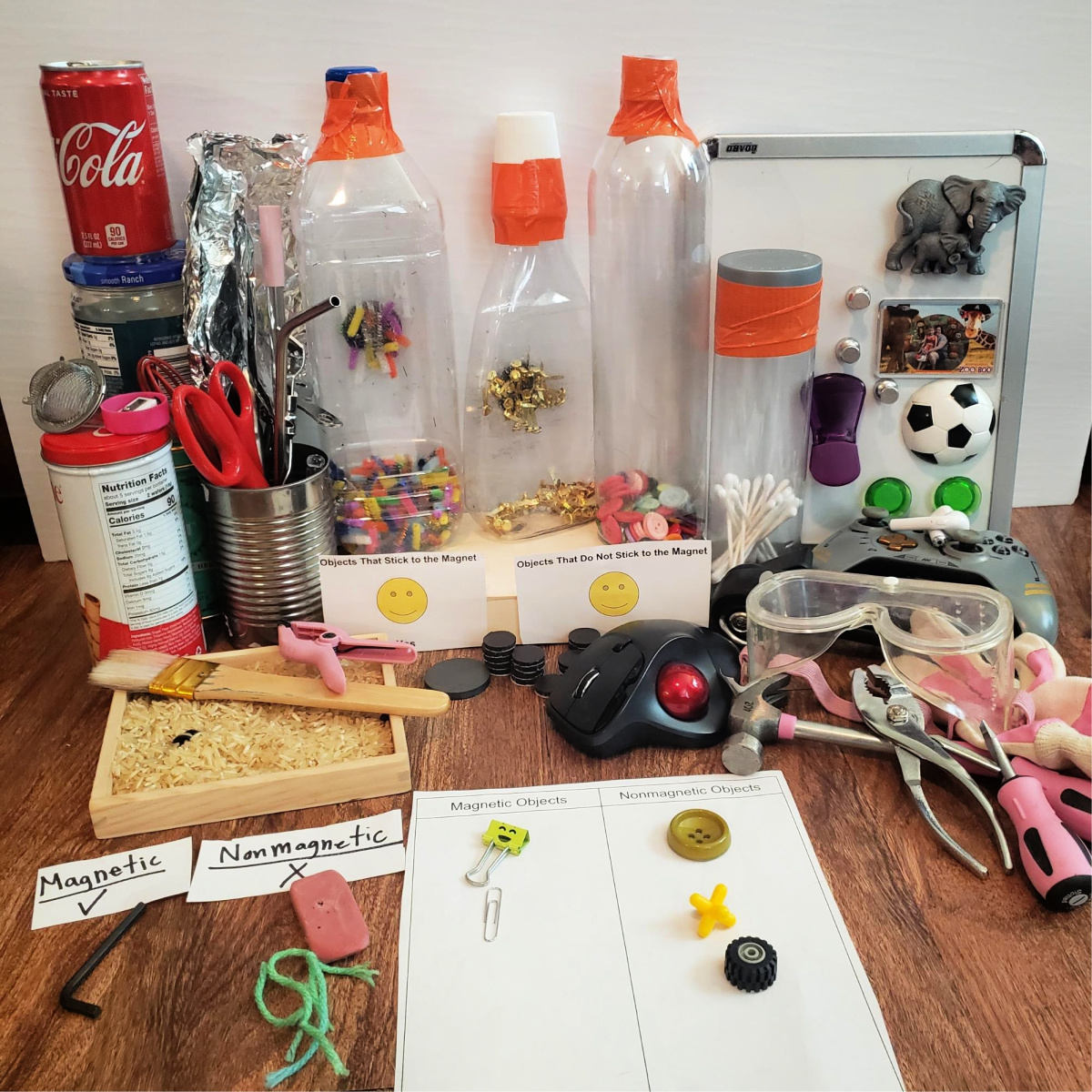As a mother and as a kindergarten teacher, I am here to tell you that summer can be CHALLENGING! But I am also here to help you entertain and educate your children with some experiments involving magnetism, because at-home science projects are more fun for parents when they are something super cool!
It’s okay if you are that mom who collects all of the recyclable materials to craft on a daily basis with your child, just as much as it’s okay to be the type of mom who exercises her “add to cart” skills instead. I have compiled a list that is fit for BOTH types of mamas. You can click on the link and click add to cart OR you can take a dive into your recycling bin and scour your garage, it’s completely up to you!
I have a confession to make, though . . . I am a mix of BOTH of those types of moms this summer! In the spring, distance learning was no walk in the park, and neither was distance teaching while trying to keep my daughter and me quiet during my husband’s work meetings living in a small, two-bedroom apartment! But we humans are powerful, adaptable, and capable of so many things! So why not get your kids super excited about science and get them thinking you are super cool while we are at it?! Let’s get started!
Today, you can do any one of these activities with your kids, and they will grow in their knowledge and curiosity about magnetism! We have advice about how to get started, and how to tailor this activity to children of different ages. Each activity will be hyperlinked; please click on the title for further instructions on each activity. You can feel free to do every single activity or just the one labeled for your child’s age range.

For more ideas about activities you can do while learning at home with your kids, visit the main page, Charter a Summer of Learning.
Exploring Magnetism with At-Home Activities
I love doing these types of activities with my students because I know they are intrigued by magnets and how they work. I have worked with many ages throughout my career, and I can tell you that no matter what their age is, kids think magnets are cool! You just need to choose an age-appropriate activity to get them started. As they progress in their understanding and skill level, you can move on to something more challenging—as long as they are old enough to understand the safety procedures that are involved in science experiments.
Each activity is progressively linked to one another in the sense that they build off of each other. You don’t HAVE to do all of them, but you could if you wanted to! The age ranges are purely suggestions—I have guided my seven year old through all of them with great success and interest.
Here are links to all six activities, with their titles and recommended age ranges:
Activity for Toddlers (2–3 years old): Introduction to Magnetism
Activity for Preschoolers(4–5 years old): Develop Questions About Magnetism
Activity for Lower Grade Schoolers (6–9 years old): Research Magnetism
Activity for Upper Grade Schoolers (10–12 years old): Hypothesize About Magnetism
Activity for Middle Schoolers (13–15 years old): Experiment With Magnetism
Activity for High Schoolers (15–17 years old): Collect and Analyze Data (Finding Magnets!)
Click on any of the hyperlinks above to take you straight to a detailed list of materials and instructions. Or, you can read through this entire post first to see how these activities would blend if you were to do every single one with one child—or even if you have a child in your household of every age range listed above!
Materials for Exploring Magnetism
Here is an overall list of some basic materials you might need for the magnetism activities. I found all of these materials within my home. But like I said, I know every mom is different and sometimes you just need to click “add to cart”! So these materials are hyperlinked to Amazon for your convenience.
Magnets (and neodymium magnets for the MUCH older kiddos!)
Various Magnetic and Nonmagnetic Items
Two Labels (Will say “Magnetic” and “Nonmagnetic”)
Paper
Dry Rice (optional)
Hot Glue Gun or Super Glue (optional)
Duct Tape (optional)
Talking With Your Kids About Magnetism
Something to keep in mind for all of these activities: They should end with a conclusion developed by your child about the information that they have gathered, based on your child’s abilities. Their conclusion might be saying the words “yes” and “no” when pointing to things, fully explaining WHY magnets stick to one item and not the other, or describing what the magnet’s function may be. It is important to have your child discuss and explain things to you and with you to help their language development at every age. Here are some additional age-appropriate suggestions for talking with kids about each activity.
INTRODUCTION TO MAGNETISM (Toddlers): No explanations are needed at this time. Just simply showing your child how the magnets move certain things inside of bottles and not others will ignite their own natural desire to learn and inspire them to explore so that they should be occupied for a while!
DEVELOPING QUESTIONS ABOUT MAGNETISM (Preschoolers): Within this activity you will model for your child, and verbally tell them, that when a magnet sticks to something it is magnetic and when it does not it is nonmagnetic. The question you will provide to them is, “Is it magnetic or nonmagnetic?” The questions that they will generate themselves will be “why?” and “how”?
RESEARCH MAGNETISM (Lower Grade Schoolers): Within this activity, the same exact procedures will take place as they did in the activity for preschoolers, but you will introduce larger vocabulary to your child along with an explanation and definitions. (Don’t worry! I put all of that in there for you!) After they have completed the activity they will then move on to recording the data that they have collected onto a chart! This is all to help them gain understanding of AND practice using the Scientific Method.
HYPOTHESIZE ABOUT MAGNETISM (Upper Grade Schoolers): For children of this age group, it is important to make them feel like they are brilliant at something. We know about magnetism because of our age and previous knowledge, but act as if you are completely unsure and unaware of any magnets or magnetic items as they hypothesize about where they might find magnets within your home. Their confidence will soar and encourage growth for the next activity!
EXPERIMENT WITH MAGNETISM (Middle Schoolers): I know your child probably has access to YouTube if they are this age, BUT they often forget that YOU have access to it TOO!!! Use this to your advantage!! Watch this video WITHOUT THEM and gather the supplies to demonstrate these unforgettable experiments and then encourage them to do the research to figure out WHY and HOW they happen. Also encourage them (if you are comfortable with it) to do the experiments on their own to show their friends on social media. Then you can be the “cool mom” or “cool dad.”
COLLECT AND ANALYZE DATA (FINDING MAGNETS!) (High Schoolers): If your kid is in high school, then they have most likely learned about almost all of the things pertaining to magnets. (Or at least they would have if they went to SST! wink) But something they MIGHT not have been able to do yet is FIND magnets for themselves!
You will of course need to set boundaries for this experiment . . . OR they will begin to take apart ALL of your valuables just to find magnets!

More Science Projects and Learning Opportunities
Your child will undoubtedly become more obsessed with magnets over the next few weeks. So I encourage you to flow through all of the activities to help your child learn about the Scientific Method, but I also recommend taking a leap into some of these art, chemistry, and engineering magnetism activities to keep the fun going and the spark alive.
“Magnet Painting,” Housing a Forest, January 2, 2015
“Magnetic Slime,” Sara, Bitz & Giggles, April 8, 2016
“Lego Magnet Maze,” Emma Vanstone, Science Sparks, February 24, 2015
The DoSeum is one of the best places in town to get kids some hands-on learning with magnets! You can check for updates about the DoSeum’s reopening here.
Charter Moms Chats
Watch Kelly Alston’s interview with Inga Cotton on Charter Moms Chats.
For more ideas about activities you can do while learning at home with your kids, visit the main page, Charter a Summer of Learning. For more science activities, check out Elephant Toothpaste and Weather Science.
Enjoy more activities created by SST teachers, including Kids Teaching a Lesson to Adults and Making Faces. Read about the School of Science and Technology in our enrollment guide.
About the Author
Kelly Alston is a kindergarten teacher at the School of Science and Technology—Discovery who has been in love with learning for almost two decades. She has been happily married for almost 11 years and has a super rambunctious almost-eight-year-old daughter who loves science! Kelly herself is extremely extroverted and misses being in crowds of children and people in her classroom or at summer camp, but her introverted husband and daughter have been helping her to find joy in new ways, like making masks for their friends and family in their spare time.
